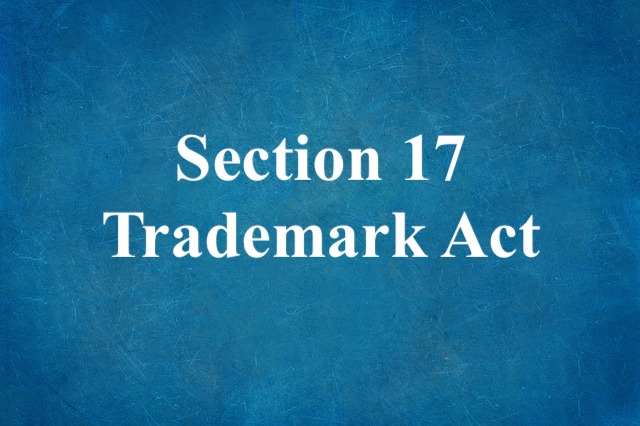Section 17 deals with composite marks which consist of words or combination of words with designs or logo and brands together such as BMW, McDonald’s, Kinder Joy, Cadbury, etc.
Section 17 provides that:
(17) (1) When a trade mark consists of several matters, its registration shall confer on the proprietor exclusive right to the use of the trade mark taken as a whole.
(2) Notwithstanding any thing contained in sub-section (1), when a trade mark (a) contains any part—– (i) which is not the subject of a separate application by the proprietor for registration as a trade mark: or (ii) which is not separately registered by the proprietor as a trade mark : or (b) Contain any matter which is common to the trade or is other wise of a non – distinctive character. the registration thereof shall not confer any exclusive right in the matter forming only a part of the whole of the trade mark so registered
When a trademark is registered it is taken as a whole and any part of that trademark has to be separately registered under Section 17 of the Trademarks Act, 1999, if the trader wants to enjoy exclusive rights concerning his trademark, he has to go through the whole registration process, i.e. each and every mark has to be distinct and non-descriptive in nature for it to be approved by the Registrar. If a part of the trademark is not registered separately the trader cannot make claims of infringement against another trader who uses a part of that trademark. When it comes to the registration of composite marks, the proprietor needs to apply for separate trademark registration for each of the distinct feature that is an essential part of the mark. If this is not done, disregarding the fact that the trademark is registered the owner would not be allowed to claim his exclusive rights over the distinct part of a trademark, but that trademark as a whole. Hence, it would be governed by section 15 and 17 of the Trade Marks Act, 1999.
In Ultratech Cement Limited and Ors. vs Dalmia Cement Bharat Limited case, the court held that Dalmia company can use the trademark ‘Dalmia Ultra’ because it does not infringe the trademark of UltraTech Cement, as Dalmia has built its own goodwill over the years and the usage of the word ‘Ultra’ would not pose a problem to UltraTech Cement which has not separately registered ‘Ultra’ as a trademark, Dalmia Cement was allowed to use the word ‘Dalmia Ultra’ to promote its goods.
In a recent case of Nav Jagriti Niketan Education vs Delhi International School, Delhi International School contended that the words ―Delhi International School are a prominent part of its label and, therefore, use of the said name would amount to infringement of its trademark. However, the Delhi High Court held that the logo is a complex one with several features such as an open book, olive leaves and a crown. Delhi International School had only registered its label and DIS logo and had not registered the name Delhi International School as a word mark, the court under Section 17(1) of the Trademarks Act, 1999 held that there was no infringement of trademark by the use of the name Delhi International School by a school in Indore with the same name because Delhi International School is not registered as a word mark.
However, this line of reasoning by the courts raises concerns because it is a very time-consuming and tedious process for the proprietor to register each and every part of the trademark separately and also the process is also expensive. Over the years the composite trademark as a whole would have garnered goodwill and reputation for the company, but when a part of it is not registered it would be unfair to not grant any compensation to the trader when someone misuses the goodwill and infringes a part of the trademark. And also it will be difficult for the proprietor to choose a distinctive and non-descriptive word, logo or design for each and every part of the trademark in order to finally get it approved by the Registrar and to register the trademark.
So, therefore, necessary amends should be made to Section 17 of the Trademarks Act, 1999 and emphasis should be laid on considering the trademark as a whole and not each and every part of the trademark so that traders with registered trademarks can enjoy the benefits.




